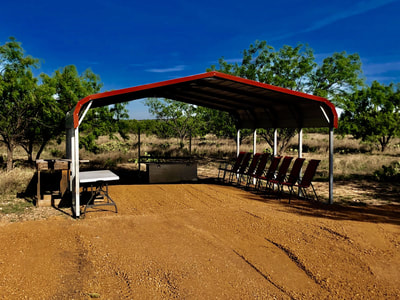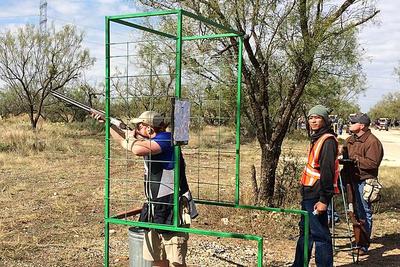Helicopter Pig Hunting is the only year-round helicopter feral hog hunting business in the U.S. Browse our selection of hunting packages and lodges today!
Helicopter Pig Hunting / Facts |
-
Located In San Angelo, Texas
- 15 Minutes from the San Angelo, Tx Airport (SJT)
- Airport Pick Up and Drop off
- 12 Months of Hunting
- Robinson R-44 & R-66 Turbine Helicopters
- We provide Suppressed .556, 300 Blackout & Fostech / Origin 12 Shotguns
- Trap, Skeet, Sporting Clays, 5 Stand, Pistol & Rifle Ranges
- Private Chef, Lodging & Dining
- 2.5 Million Acres of Private Ranches
- 28 Years Experience
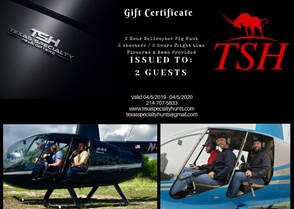
Purchase your customers gift certificates online.
TSH Information Request Form:

★★★★★ 5 Star Reviews From Our Customers
★★★★★ 3 months ago
★★★★★ 3 months ago
★★★★★ a month ago
★★★★★ 3 months ago
★★★★★ 3 months ago
★★★★★ 4 months ago
Things to consider when booking a Helicopter Pig Hunt
How long has the company been in business?
We have been in the hunting business 28 years and have been operating a full time Helicopter Hunting business for eight years.
Where is the company located?
The location of the Helicopter Hunt is very important. We operate in West Texas, which allows us to hunt year round as our canopy cover is minimal.
Does the company operate full time?
Yes, we operate full time, 12 moths out of the year, 7 days a week.
How many helicopters does the company operate?
We are mandated by the FAA and all of our helicopters are required to be inspected and serviced every 100 hours by an approved FAA mechanic. We operate eight helicopters.
Does the company own the lodge they operate out of?
We own and operate our lodge, shooting range, and ranch where our guests stay.
How many employees does the company have?
We have a full-time staff consisting of chefs, ground safety crew, helicopter pilots, gun cleaning crew, maintenance crew, lodge cleaning crew and drivers.
Experence of pilots?
All of our Heliopter Pilots are full-time and they fly most everyday. Our pilots have thousands of hours of experience.
How many acres are available to use for the hunts?
We are currently flying over 2 million acres of private land within two hours of the San Angelo, Texas area.
Does the company mix groups?
We do not mix groups when you book with us. You will be the only guests at our faculties during your hunt.
Does the company ferry the helicopter?
We trailer our heliopters to the ranch we will be hunting each day to reduce the cost of airtime.
Does the company offer a motor coach?
We own and operate a 40 foot motor coach equipped with wi-fi and satellite TV. We pick you up and drop you off at the airport, and drive you to the hunting location each day.
How close is the company to an airport?
We are a 20 minute drive from the (KSJT) San Angelo , TX. Airport American Airlines services the San Angelo area.

Included in your package hunt:
- Airport pick up and drop off in our 40 foot motor coach
- Lodging & Dining with our chef
- Assigned Helicopter Time
- Range use and Safety Briefing
- Firearms, Supressors & Ammo



- Lodging
- Meals
- Full Time Chef
- Sports Bar
- Trap & Skeet
- Sporting Clays & 5 Stand
- Pistol & Rifle Range
- 35 species of Exotics & African Game
Ar-15 Shooting Facility
Sporting Clays, Trap, Skeet & 5 Stand Shotgun Shooting Facility
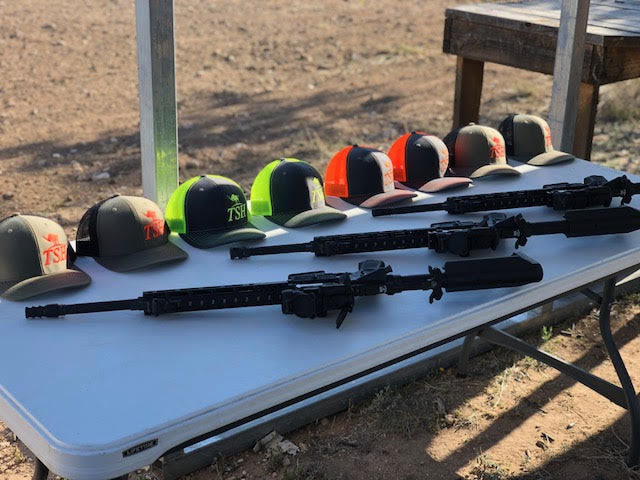
Helicopter Pig Hunting with Texas Specialty Hunts
Texas Helicopter Pig Hunting a division of Texas Specialty Hunts with 28 years of hunting experience. Book your hunt with the only full time Helicopter Hog Hunting Company in the U.S. We have over 2.5 million acres of private land in Central and West Texas. Our location in Central West Texas allows us to hunt year round for Feral Hogs, our lack of foliage in West Texas allows us better access to the Feral Hogs during the spring and summer months. We hunt 7 days a week 365! Book your hunt with the only full time Helicopter Hog Hunting business in the U.S. Our Lodge is located 15 minutes from the San Angelo Texas Airport. We will pick you up and drop you off in our 40 foot motor coach equipped with satellite TV and WiFi. You will have a choice of suppressed .556, 300 Blackout or 12Ga. Buckshot when hunting with us. While at the ranch you will have a private chef, skeet, trap, sporting clays, 5 stand, pistol and rifle range. Book your hunt with the best in the business!
What you should know about Feral Hogs in Texas... And what we plan to do about it...
Wild hogs are among the most destructive invasive species in the United States today. Two million to six million of the animals are wreaking havoc in at least 39 states and four Canadian provinces; half are in Texas, where they do some $400 million in damages annually.
There are now around 2.6 million hogs in Texas, more than anywhere else in the United States. Their foraging causes about $52 million in annual agricultural damage.
https://www.smithsonianmag.com/science-nature/a-plague-of-pigs-in-texas-73769069/
Helicopter Pig Hunting
Join our forces to combat these invasive species & book your hunt today!
We offer the best in Helicopter pig hunting in Texas. Feral pigs are out of control we help private land owners with these invasive species. Our rates are competitive, with no hidden fees. Our employees are full-time professionals and will be there to help you every step of the way.
Texas Helicopter Pig Hunting has over 2.5 million acres of private Texas land with ranches throughout the state to better serve our customer base. Let us put our experience to work for you.
On our guided helicopter hog hunts in Texas, we offer 11 Helicopters to choose from, over two million acres of private land to hunt, and we always have Hogs to Hunt! We offer a Charter Service to help our Hunters with Logistics so that you don’t have to worry about getting to and from your guided helicopter hog hunt in Texas.
27 years in the hunting business! A full-time staff and we hunt 7 days a week 365! We are the only full-time business that offers helicopter pig hunting in Texas and the whole United States. So book your Helicopter Hog Hunt today with confidence that every detail and effort will be made to make your hog hunt a success. If you’re looking for high quality and personal service, you’ve come to the right place. At Texas Helicopter Pig Hunting we’ll give you the attention and personal service you’ll come to expect and enjoy.
Thank you for your business!
Travis Wier
President / CEO Texas Specialty Hunts / Helicopter Pig Hunting
214-707-5833 when you call i will be the person you are taking to
Texas Hunting License Information & Links:
A valid Texas hunting license is required to participate in the Helicopter Hog Hunting program. Texas Parks and Wildlife Department lists the various hunting licenses available online. Texas residents require at least the Type 101 Resident Hunting License, and out-of-state or international clients require at least the Type 157 Non-resident 5-Day Special Hunting license. If you intend to do additional fishing, bird hunting, deer hunting or exotic hunting while you are in Texas, that may require a different type of license. To save time, purchase your Texas Hunting License before you arrive. YOU MUST BRING YOUR LICENSE WITH YOU. IT MUST BE IN YOUR POSSESSION, ON YOUR PERSON, WHILE YOU ARE IN THE HELICOPTER. NO EXCEPTIONS.
Questions & Answers about Feral Hogs In Texas
Feral hogs are capable of breeding at six months of age but eight to ten months is normal, provided there is good nutrition. Under poor habitat conditions, sows have been known to eat their young. Gestation is around 115 days with an average litter size of four to six, but under good conditions may have ten to twelve young. While capable of producing two litters per year, research has shown the majority of sows have only one per year. Young may be born throughout the year with peak production in the early spring. The young are born with a 1:1 male to female sex ratio. Feral hogs generally travel in family groups called sounders, comprised normally of two sows and their young. Mature boars are usually solitary, only joining a herd to breed. https://tpwd.texas.gov/huntwild/wild/nuisance/feral_hogs/
Questions & Answers about Feral Hogs In Texas
Feral hogs compete directly with livestock as well as game and nongame wildlife species for food. However, the main damage caused to livestock and wildlife is indirect destruction of habitat and agriculture commodities. Rooting and trampling activity for food can damage agricultural crops, fields, and livestock feeding and watering facilities. Often wildlife feeders are damaged or destroyed. They also destabilize wetland areas, springs, creeks and tanks by excessive rooting and wallowing. In addition to habitat destruction and alteration, hogs can destroy forestry plantings and damage trees. While not active predators, wild hogs may prey on fawns, young lambs, and kid goats. If the opportunity arises, they may also destroy and consume eggs of ground nesting birds, such as turkeys and quail. https://tpwd.texas.gov/huntwild/wild/nuisance/feral_hogs/
See why Fortune 500 clients keep coming back!
Call us today! 214-707-5833
— We can provide you with a customized Free pricing Quote —
“Dallas we have a problem”
Some cities have taken up abatement efforts. Earlier this year, Dallas leaders approved a three-year $347,000 contract with a trapping company that corrals pigs on city-owned land and sells them to a meat-processing plant in Fort Worth.
The newspaper cautioned the city-slickers who wouldn’t know a pig from a peacock. “Even if you’re not a farmer, here’s why you should be concerned: Feral hogs tear up lawns, parks and golf courses; they skulk around highways and train tracks; and they poop in our water supply. Estimates peg the number of wild pigs in the U.S. at 4 million or more — and somewhere between 2 million to 3 million are in our state.”
https://www.dallasnews.com/opinion/commentary/2018/01/09/texas-must-get-grip-wild-hog-problem
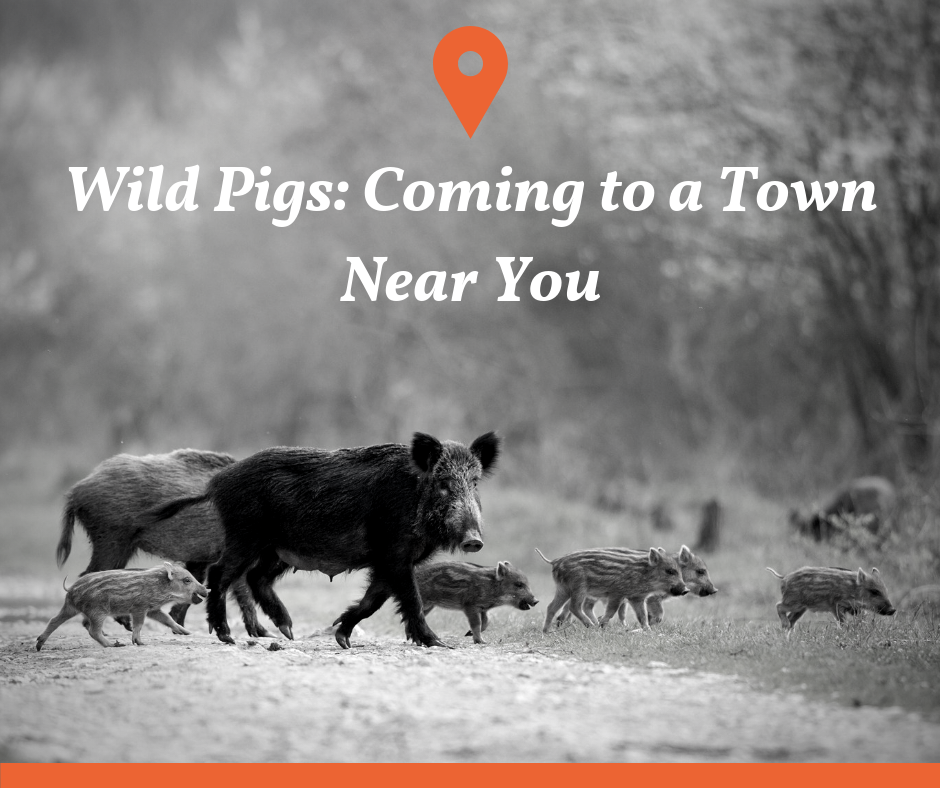
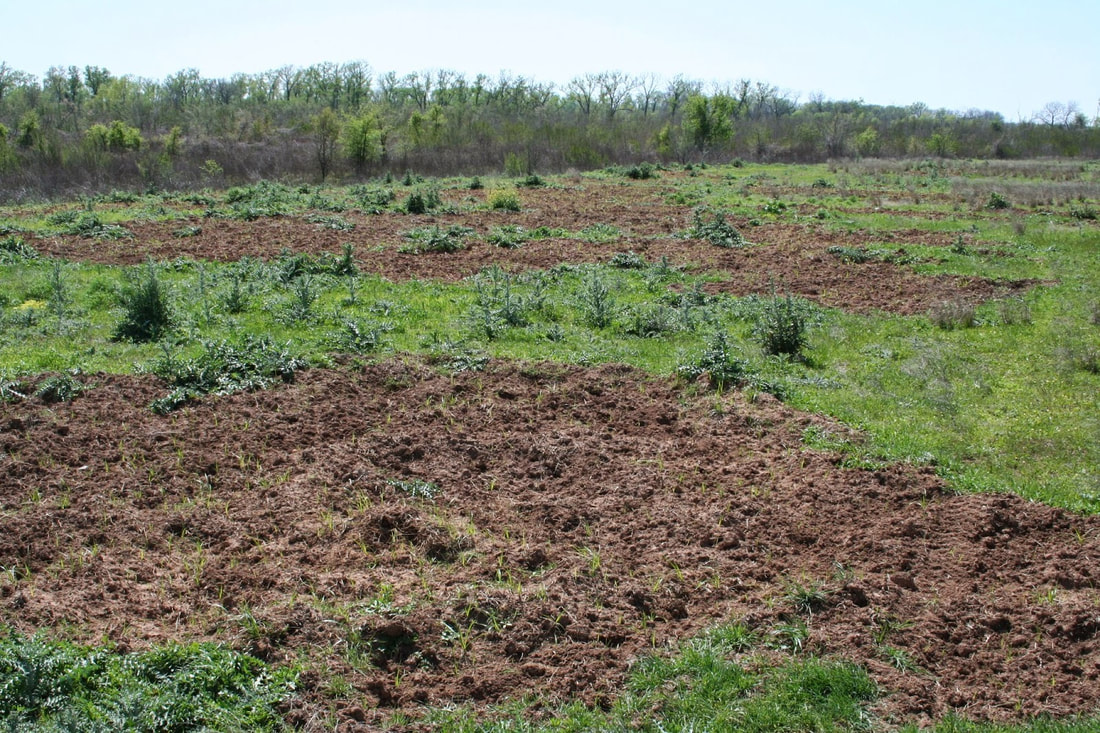
Feral hog rooting damage
Feral Hogs: Coming to a town near you
By: Kristen Tyson, M.A.
Feral hogs have been on the Texas landscape since the age of American exploration. Thanks to Texas’ wealth of plant life and the feral hog’s propensity to repopulate, these invaders settled in and spread like wildfire. Like most newbies to the Texas scene, the hogs made a home for themselves amongst the vast frontier and never looked back. The 1980s saw a growth of massive proportions as the popularity of supplemental feeding of deer became more common, along with the intentional release of hogs across the Lone Star state, resulting in damages of epic proportions. Fast forward to the present time and the term feral hog is met with a sour taste as landowners scramble to get rid of this toxic, exotic species.
Feral hog: One of an estimated 2.6 million that occupy 99% of Texas counties.
The bitter truth is that feral hogs cause over $50 million in agricultural damage annually, and that number is rising as feral hogs are left unbridled across our great state. If the economic impact were not enough, these feral hogs compete with native wildlife species for scarce resources and damage irreplaceable wetlands by rooting and wallowing. Hogs are known to carry brucellosis, a disease that is easily spread to humans and other animals in contact with their blood and other bodily fluids. Their penchant for defecating in or near rivers and streams add bacteria (fecal coliforms) to further contaminate Texas watersheds and ponds. Hogs are rampant rooters, which has led to soil erosion and the degradation of native plant communities that are vital to indigenous wildlife.
And don’t think these feral hogs defer to the wild landscape which offered such a rich diet for so many centuries. These hogs are smart and elusive and can now be found enjoying the oasis that is suburban and urban landscapes. Collisions with vehicles, damage to parks and golf courses, flowerbeds and sport fields, these hogs stop at nothing, not even our sacred cemeteries, in search of their next meal. Lands that were etched by trees and endless seclusion have now turned into neighborhoods and recreation centers. Woodland trails that once led to a private pasture now lead to newly planted turf grass and petunias.
What can be done about this terrorist on our terrain? Plenty! For starters, trapping, snaring, shooting and the use of dogs are legal practices for abating feral hog damage in Texas. But, feral hog management is not a one-time event nor are these little piggies ready to give up their domain. They have set deep roots over the years and will not go quietly. Best management practices suggest that the use of a corral trap can be highly effective in removing feral hogs from the landscape. Invest in your trapping efforts and the return will be well worth the time and money spent. Other legal practices such as aerial gunning, snaring and the use of dogs, combined with trapping, can multiply the impact of your management efforts. The result will be a reduced number of feral hogs and their destruction on your land, water and plants will be diminished, leading to a healthier habitat for native wildlife to resume control of their rightful domain.
The hyper-linked resource document below will provide you with quick access to many of our online feral hog resources including publications, fact sheets and videos.
Feral Hog Resources- Texas A&M AgriLifeExtension by Jim Cathey
Hogs in the Peaches- Follow us LIVE!!!-Part I “Chumming for Feral Hogs”

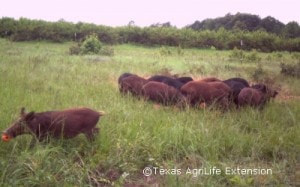
Its peach picking time in Texas and that means hungry feral hogs are looking for an easy meal!
Welcome and come along on this journey of a trapping effort to abate feral hog damage to a commercial peach orchard near the Texas AgriLife Research and Extension Center at Overton. Dr. Billy Higginbotham, Professor and Extension Wildlife and Fisheries Specialist, continually reminds landowners attempting to abate feral hog damage that trapping is a process, not an event. In order to demonstrate that process through remote camera imagery, Dr. Higginbotham is posting a photographic record of the trapping process from beginning to end here. Its not in “real time” but it will give the viewer a feel for how to go about efficiently and effectively trapping feral hogs. The process began in late June as the farmer began chumming the hogs with over-ripe peaches to a location immediately adjacent to the orchard (but outside his 3 wire electric fence). A week or so later on July 7, a remote-sensing camera was hung over the fermented bait site to monitor and determine the number of hogs in the sounder. This information will then be used to determine the size of the trap to be constructed. So, enjoy the images as we proceed through the pre-baiting or “chumming” phase, as Dr. Higginbotham likes to call it. Notice in the images that we really have two distinct groups of hogs responding to the bait: A family group consisting of sows, their pigs and a few young boars and then a second group that comes at a different time consisting of either solitary boars or a few boars together. Armed with these camera data, we will soon proceed with trap construction now that the number of offending hogs is known. Stay tuned……..
Hogs in the Peaches- Follow us LIVE!!! – Part II “Feral Hogs Don’t Own Calendars”
Now that we have an idea of how many hogs are visiting the bait site at any one time (about 12 to 15 hogs maximum in one photograph), it’s time to begin Phase II, trap construction. Several tips to consider on trap construction include:
* Tear-drop shape to facilitate loading hogs into a trailer for transport to a buying station
* Seven panels 16 feet long, 4 inch square mesh and 60 inches high placed flush to the ground—no gaps allowed!
* T-posts spaced at 4 to 5 foot intervals maximum and panels secured with heavy wire at the top, middle and bottom. Panels are overlapped 1 to 2 mesh panels with t-posts placed at each overlap.
The trap frame was put into place on Sunday, July 18. Notice that the gate has not been setup at this time and the panels adjacent to the gate were held open to increase the hog’s access to the inside of the trap. Heavy baiting with over-ripe peaches continued outside and immediately inside the trap opening. The remote camera was also relocated to the back of the trap facing back towards the gate opening. This is a critical location to photograph as it will document how far the hogs are venturing into the trap—key information to determine when it’s time to set the gate to catch. Just for fun, a second camera was placed in front of the trap facing the opening. On Tuesday July 20, several t-posts were set in a line inside the trap to support the trip wire. The gate was also set in place and wired open but a gap (about 6-8 feet on either side) was left between the ends of the panels and the gate itself in order to maximize the space hogs had to enter and feed within the trap. An eighth panel will be necessary to close the gap on each side of the gate. At this point, the peach producer was getting a bit jumpy –“Can we set the trap to catch by this Friday”? “Feral hogs don’t own calendars” was the reply he received—the camera data confirmed limited use of bait placed at or just inside the trap opening. It was obvious that the pigs that had been feeding…well, like “hogs at the trough” prior to trap construction were now wary of the trap’s presence. Patience is a virtue when it comes to trapping and relying on the camera data meant a continued chumming effort as of Thursday, July 22. Once the hogs resume a regular feeding pattern and enter deep inside the trap, the panels will be attached to the wired-open gate– forcing them to come and go through the smaller entrance. Remember, trapping is a process………..Stay tuned!
Hogs in the Peaches-Follow us LIVE!!!-Part III “The Beginning of the End”
Images collected from our remote cameras from July 22-27 indicated that the hogs were finally venturing, as a group of about 8 to 10, deeper and deeper into the trap. There were still several smaller “satellite groups” that continued to make up the late shift arriving at the peach buffet. From the very beginning of pre-baiting, it was clear that trapping would have to occur over time since these various groups were sharing in the buffet but each group held reservations at different times. Ahh…, the beauty of using cameras versus simply observing consumption of the bait on a daily basis.
By July 27, the cameras captured enough traffic into the trap to warrant attaching the panels to the gate to force all hog traffic through that opening. . The gate doors remain wired open while more emphasis was placed on baiting toward the back of the trap rather than the practice of baiting mostly outside and just inside the gate opening when the pre-baiting process first began. Note that a small piece of panel was placed over the gate to increase its height to 5 feet, and then bent inward to prevent hogs from piling up and going over the top of the trap neck adjacent to the gate.
In the wee morning hours of July 28, 6 hogs were photographed in the back of the trap after passing through the gate. This marks the beginning of the end….at least for the first group of hogs. If hog traffic continues at its present rate as evidenced by 1) consumption of all bait placed at the back of the trap and 2) the photographic evidence of same, we could be within a day or so of setting the gate to capture the first wave of hogs–in what should be a series of successful trapping events over the coming weeks!
Hogs in the Peaches-Follow us LIVE!!!-Part IV “A One Way Ticket to Hog Heaven”
By July 28th, the largest sounder of hogs was hooked on the peaches placed inside the trap and were more than willing to feed all the way into the back of the trap. However, because of scheduling issues, the decision was made to delay setting the trap to catch until Sunday, August 1st, even though the hogs were “trap ready” several days before. Chumming continued while daytime temperatures soared to triple digits throughout the weekend.
The trap was re-baited on the evening of August 1st and the gate set to trip. The trip wire was run above “hog height” until it reached the next to the last t-post. From there, it was run down to about a foot off the ground at the last t-post about 8 feet from the back of the trap and secured to the back of the trap. Plenty of bait was placed around the foot high trip wire to ensure that it would be triggered while the hogs were at the very back of the trap—far from the gate. In fact, the images captured on camera revealed that the actual gate trip occurred between 10:48 pm and 10:55 pm Sunday night. A daylight check the next morning (August 2nd) revealed an even dozen hogs were captured.
It was important to get the hogs loaded and transported while it was still “cool”. Hogs left in an unshaded trap will die by late afternoon in the Texas summer heat, so once a trap is set to trip, it is imperative to check it daily, preferably at the coolest time of day.
A trailer was backed into the gate and the all important board was secured at the bottom of the gate opening to prevent escape under the trailer. With the board in place and the gate opened and secured, the hogs funneled away from humans at the back of the trap and loaded easily into the trailer. Only one person was required to work the trailer gate in order to secure the hogs once they self loaded.
With a one way ticket to hog heaven punched for travel, the hogs were transported to a buying station some 15 miles away. The landowner was paid for the hogs at the buying station based on weight, allowing him to recoup at least some of his trapping costs. From the buying station, the hogs will be transported with others to a processing facility where they will be federally inspected and processed, destined for human consumption in the U.S., Europe or Asia.
Hogs in the Peaches-Follow us LIVE!!!-Epilogue
The first dozen hogs were trapped on the night of August 1st but that is not the end of our trapping journey. We know from camera images recorded during the pre-baiting phase that there are still several small pods of hogs responding to bait—as well as a couple of rather large solitary boars that have yet to enter the gate for a free meal.
This trapping process covered almost a month—from chumming, to hanging a camera, to trap construction, to final capture. Admittedly, we could have shaved perhaps a week or more off of our time spent during the month of July 2010—but peach picking at a commercial orchard takes precedent over all other activities during the harvest season.
If you think that this trapping process is too much of a time investment, consider this: Although these hogs had been well-trained to bait beforehand, they were reluctant to accept the presence of the trap, much less enter it. The fact is, in this particular area the hogs have been gun hunted (shot at as recently as early July), dogged and “trapped at” for a number of years. They are smart, they are trap-shy and they have an uncanny ability to avoid humans. Our camera data documented all of this in real time.
We are not finished trapping at this site. The gate has been wired back open and pre-baiting has resumed. Bait will again be placed immediately outside the gate and through the opening to entice hogs to either re-enter or enter inside the trap for the first time. As the peach crop plays out, shelled corn and soured corn will be used as bait. We will continue to conduct additional trapping efforts whenever camera data documents hog response inside the trap. It is possible that if additional hogs respond to bait but fail to venture all the way to the back of the trap, we will have to rig a “short trigger” that will facilitate gate closure just one-third or one-half of the distance to the current trigger location. Time will tell.
The bottom line is this…..trapping is indeed a process, not an event. If you have ever set up a box trap and became discouraged after just a few days of trapping effort, now you know why your efforts failed. The method outlined here is just one of many successful ways to trap hogs and abate the damage they cause.
Absentee landowners take note: This method is custom made for those of you that only get to your rural property on weekends. A deer corn feeder can be set up to feed while being monitored by a camera. Once the hogs respond to the bait consistently, construct a trap of the appropriate size around the feeder, taking care to make sure the feeder feeds both outside and inside the trap. Within another week or so, if the hogs are trained onto the feed as evidenced by camera data, you can determine the date of capture that fits your weekend schedule. Just make sure you have a plan formulated to deal with the captured hogs in a timely and ethical manner.

Feral Hogs Of the 4 to 5 million feral hogs in the United States, an estimated 2.6 million call Texas home. Feral hogs can be found in 99% of Texas counties and cause an estimated $52 million in damages to Texas agricultural enterprises each year. Additionally, feral hogs are causing an increasing amount of damage to landscapes in suburban/urban areas across the state. There are no registered toxicants or other products that can be legally used as poisons to control feral hogs in the United States. Legal population reduction techniques in Texas include shooting, trapping, snaring and the use of specially trained dogs. Best management practices suggest that trapping can be a highly effective technique, but ultimately, a strategic combination of multiple techniques will have the largest impact on feral hog populations within the state.
Latest News on The Feral Hog Invasion
HOGS GONE WILD ONCE ESTABLISHED, FERAL HOGS HARD TO CONTAIN, DIFFICULT TO ERADICATE Marty Roney, Montgomery Advertiser Published 9:57 a.m. CT March 9, 2018 | Updated 3:47 p.m. CT March 12, 2018
They are four-footed eating, breeding, rooting machines.
Feral hogs are an invasive species present in at least 35 states, according to the United States Department of Agriculture. They cause billions of dollars in crop damage each year, and their rooting causes widespread and lasting environmental damage, according to the USDA.
The porcine population bomb is exploding on farms and ranches, timberlands and suburban yards across the country. Sows become sexually mature at six months, and can drop two litters a year. The average litter size is six to 12 piglets. After reaching about two months old, the piglets have no natural predators. Adult hogs have no natural predators, other than man.
Hogs are omnivores, eating just about anything including plants, small animals and carrion.
Sam Upchurch, owner of Grey Rocks Ranch in Autauga County, talks about damage feral hogs inflict on the 5,700 acre ranch.Marty Roney/Advertiser
The problem
Grey Rocks Ranch is a sprawling spread of about 5,700 acres in western Autauga County. Sam Upchurch’s late parents built the ranch into a nationally recognized operation raising Santa Gertrudis cattle. Few cattle are raised here now. The ranch is now intensely managed for wildlife; deer, turkey and quail. The battle against the hogs is an ongoing and aggravating struggle, said Upchurch, an attorney who lives in Birmingham.
“If you don’t eliminate 70 to 80 percent of the population every year, you’re losing ground,” he said. “They are omnivores, they will eat just about anything. And the biggest thing is they destroy the habitat. And I am convinced that habitat is the most important thing for wildlife. Pigs destroy the habitat, they soil, the water and are generally just horrible animals.”
“If you don’t eliminate 70 to 80 percent of the population every year, you’re losing ground.”
SAM UPCHURCH, GREY ROCKS RANCHFor the past two years, the USDA has used helicopters to shoot hogs from the air at Gray Rocks. A gunner uses a semi-automatic 12 ga. shotgun to shoot the hogs. Over a four-day period last year, about 350 hogs we bagged. This year, the effort yielded 74 hogs.
Alabama is a hunting crazy state. Hunting generates an annual economic impact of about $1.8 billion a year in the Heart of Dixie, according to U.S. Department of Fish and Wildlife figures. Whitetail deer are ether most popular game animal in the state, according to the Alabama Department of Conservation and Natural Resources.
Hogs are present in all 67 counties in Alabama, according to the game department. A study conducted by Mississippi State University shows pig populations can double each year. Adult wild hogs eat 3 to 5 percent of their body weight daily, so, 100 hogs can eat 600 pounds of food daily or 110 tons each year.
The study shows there is about a 50 percent overlap in diet for hogs and whitetail deer in the fall, meaning hogs and deer compete for the same food sources. Hogs can live up to 10 years in the wild. When it comes to population control, the study shows that a 50 percent depredation of wild hogs is needed to stop population increases and a 70 percent removal of wild hogs yearly is needed if there is a chance to eventually exterminate the population.
Ty Baker, USDA employee, looks on as a USDA helicopter with a gunman flies over the tree-line during a feral swine control program at the Grey Rocks Ranch in western Autauga County. (Photo: Albert Cesare/Advertiser)
But the complicating factor is hogs are a mobile scourge, said Mike Blake, ranch manager at Grey Rocks.
“They will move to where the food is,” he said. “So, if your neighbor has hogs, you’ll have hogs eventually. And if you have hogs, your neighbor will have hogs eventually.
“Somebody that has 20 acres out in the country, they are just as proud of their place as Sam is of this place. And hogs will do the same damage on 20 acres that we have seen here. You can’t stop trying to control them, it’s a year-round effort.”
The MSU study shows that in 2012 in 41 counties in southwest Georgia, wild hog damage totaled $81 million. That breaks down to $57 million in agriculture and $24 million in non-agriculture damage. The damage ranges from row crop destruction to livestock mortality of newborn calves and young sheep and goats. Hogs also cost money in the timber industry, cutting production and impacting reforestation efforts. Then there are water quality issues, where fecal coliform levels increase and water quality decreases. And don’t forget infrastructure damage, the study points out, rooting causes problems in fields, roads and dams and levees.
Agriculture, which includes forestry, is the Number One industry in Alabama, according to the Alabama Farmer’s Federation. The industries drive a $70.4 billion annual economic impact and supply 580,295 jobs, federation figures show.
And don’t forget about the diseases wild hogs can carry. The Centers for Disease Control and Prevention show that feral hogs can carry 45 diseases and parasites that pose a risk to livestock, pets, wildlife — and in some cases — humans. For wildlife and livestock, those diseases include pseudorabies, swine brucellosis, bovine tuberculosis and leptospirosis. Hogs can also carry the foreign animal disease such as African Swine Fever, classical swine fever and foot and mouth disease.
The MSU study shows that diseases wild pigs carry that can be transmitted to people include leptospirosis, swine brucellosis, e. coli, salmonellosis, toxoplasmosis, trichinosis, giardia and cryptosporidioses.
Clayton Glassey, USDA employee, aids Mike Blake, Grey Rocks Ranch manager, in loading a feral hog into his truck at the Grey Rocks Ranch in western Autauga County. (Photo: Albert Cesare/Advertiser)
The solution
Everyone generally agrees that the best way to control feral hogs is through trapping. Usually the traps are made of metal fence panels and have some type of door that can be tripped to trap the hogs. The most effective practice is to trap an entire group, or sounder, of hogs.
Alabama law forbids the transport of live feral hogs. Once the hogs are trapped, they have to be killed in the trap.
A point of contention among many landowners is the regulation that hogs can’t be hunted at night or over bait during deer season. Deer season runs from mid-October to Feb. 10 in the state. The game department’s logic is simple, the practice of shooting hogs at night and over bait could lead to more night hunting of deer, which is also illegal.
Everyone also generally agrees that controlling hogs isn’t possible one rifle bullet at a time. But still, every method should be used, Blake said.
“That’s a long time, from October to February,” he said. “We trap, hunt with dogs and shoot hogs. We should be able to hunt hogs year-round with little or no restrictions. If somebody is going to night hunt, they are going to night hunt. If your house is infested with roaches or mice, you get rid of them. And hogs are nothing but vermin.”
The no hunting at night over bait during deer season regulation will stand, said Chuck Sykes, director of the game department’s wildlife and freshwater fisheries division.
“Hunting hogs is a recreational activity, it is not an effective management tool,” he said. “Show me a credible study that says hunting is effective, and I’ll reconsider. But I’ve been doing this a long time, I’ve been there and done that. You can’t blow smoke up my skirt and convince me that hunting hogs is an effective tool.
“I’m protecting a $2 billion a year industry here. I’m not going to do anything that threatens the resource.”
“If your house is infested with roaches or mice, you get rid of them. And hogs are nothing but vermin.”
MIKE BLAKE, GREY ROCKS RANCH MANAGERThat approach is “short-sighted,” said Robert White, a Montgomery hunter. He hunts on family-owned land in Lowndes County. Hogs moved onto the place about three years ago.
“We don’t see the deer and turkey we used to see, after the hogs showed up,” he said. “And what really concerns me is we don’t have the deer and turkey on our game cameras like we used to. I’m no wildlife biologist, but I believe the hogs are the reason. If we don’t get a handle on these hogs, we may not have much of a deer population in a few years. The pigs are that big of a problem.”
Clayton Glassey, left, USDA employee, and Ty Baker, USDA employee, take blood samples and DNA from a hog shot from a helicopter during a USDA feral swine control program at the Grey Rocks Ranch in western Autauga County. (Photo: Albert Cesare / Advertiser)
Barry Estes and his brother, Bart, operate Alabama Hog Control Inc. The company sells and leases hog traps, but also takes paid hunters out for hog hunts at night. The two days after deer season ended this year, Barry Estes and clients hunting in Autauga County bagged 40 hogs while hunting at night.
“Hunting is not the most effective way, but it is a control method when you do it right,” Barry Estes said. “We shoot the big hogs, the sows and boars. That means the little hogs may get dumb and walk into those traps that the older hogs kept them out of. You may see those little hogs in the fields in daylight where you can get a shot at them.
“You need to be able to use every tool in the toolbox.”
Other states in the Hog Belt have different laws in dealing with hunting of feral hogs:
- Florida: On private land with landowner permission hogs can be trapped or hunted year-round. No hunting license is required and there is no bag limit. Both sexes may be harvested. A gun and light at night permit is not required to hunt wild hogs for using a gun and light on private land with the landowner’s permission.
- Mississippi: A hunting license is required for residents and non-residents. Landowners and leaseholders, and their designated agents, can hunt nuisance animals year-round at any time day or night. Bait is legal expect during spring turkey hunting season. Bait must be removed at least 10 days before hunting any game animals.
- Georgia: There is no limit and no closed season for feral hogs. Residents must have a valid hunting license unless they are hunting their own property. Non-resident must have a valid hunting license. Feral hogs may be hunted at night with a light which is carried on the person. Hunting over bait is allowed. There is no hunting from vehicles.
- California: A hunting license and wild pig tag are generally required. The season is open year-round and there is no bag limit.
The most effective trapping technique for feral hogs is to capture the whole sounder (family group) at one time, which requires that the pigs become acclimated to the trap and bait inside.
(Photo: CONTRIBUTED )
A hunting license is required in Alabama for residents to hunt hogs. The exception is if they are hunting on land they own. Non-residents must get a hunting license to hunt hogs. License sales are key to the operation of the department, Sykes said. The wildlife and freshwater fisheries division receive no funding from the state budget. Money to run the division comes from federal taxes levied on the sale of guns and ammunition and hunting and fishing related equipment.
The state receives its portion of the federal money based on the sale of hunting and fishing licenses.
“If we didn’t require licenses to shoot hogs, how many hunting licenses do you think we would sell?” Sykes said. “Deer hunters would just sit on a pile of corn and say they were hog hunting. The only way our guys could build a case is if they saw the hunter dragging a deer out of the woods. And without license sales, we would have to close the doors.”
Back in Lowndes County, White is straight-forward about his hog control methods.
“We’ll trap, but we’ll also shoot every damn hog get a chance to,” he said. “And we’ll pay the fine if it comes to that.”
Buy Photo
From left, Clayton Glassey, USDA employee, and Ty Baker, USDA employee, gather blood samples and DNA from a hog shot by the USDA from a helicopter as Mike Blake, Grey Rocks Ranch farm manager, ropes the hog.(Photo: Albert Cesare / Advertiser)
Buy PhotoFullscreen
The Many Functions of Wallowing for Wild Pigs
Written by Shelby McCay, Texas A&M University, WFSC ’15 and MNRD ’19
Edited by Josh Helcel, Extension Associate, Texas A&M Natural Resources Institute
Wallowing is defined as coating the body surface with mud or a mud-like substance and while this behavior is not found exclusively in wild pigs (Sus scrofa) (rhinos, elephants, bovids and deer will also wallow) it is most commonly attributed to them (Bracke 2011). You may be wondering, why do they wallow? What function does it serve? As it turns out there are a variety of reasons why pigs wallow and we will explore each further here.
Thermoregulation
Both wild and domestic pigs are prone to overheating due to their lack of sweat glands and so they must use other methods to regulate their body temperature. These include moving during the cooler hours of the day, occupying shaded areas, or wallowing. In Texas, wild pigs typically wallow during mid-day throughout the summer and into the early fall months in order to avoid the hottest parts of the day. As average temperatures begin to decline, wallowing becomes less of a necessity for cooling and more of an opportunistic behavior. So why do they use mud to cool off instead of just getting directly in water? One study showed that it took two hours for the water in the mud on wild pigs to evaporate compared to only 15 minutes for just water (Ingram 1965). Essentially, layers of mud can serve as a kind of long lasting “wet suit” to keep wild pigs cool in warm environments (Bracke 2011).
Health Benefits
In addition to aiding in thermoregulation, the mud layer wild pigs obtain from wallowing can provide multiple health benefits. Research has shown that mud can serve as a kind of protective layer against biting insects (Nalin 1996) and sunburn (Gegner 2001). One study found that wallowing could potentially help wild boars disinfect wounds caused by fighting through the bactericidal properties of the mud (Fernández-Llario 2005). Wild pigs can carry a variety of ectoparasites, including fleas, lice and ticks (Schuster 2011) and they usually carry the highest parasite load in the summer months (Bracke 2011). Ticks in particular are commonly found behind the ears and on thin skinned areas where wild pigs have a hard time reaching (Bracke 2011) and are one of the most common ectoparasites found on wild pigs. In a study conducted in Texas, seven different species of ticks were found on wild pigs across eight eco-regions (Sanders et al. 2013). Wallowing can help wild pigs to remove some of these ectoparasites as the mud layer can trap some of them and the pigs can later remove by rubbing on either natural or manmade objects. Wild pigs will often intelligently seek out telephone poles and posts treated with creosote achieve this, as the compound is toxic to ectoparasites. In areas with high wild pig activity, visible markings from their rubbing behavior can often be found.
Wallowing and rubbing behavior helps to rid wild pigs of fleas, lice and ticks.
Sexual Function
In a 2005 study, Fernàndez-Llario looked at the wallowing behavior of wild boars in Spain and found that males wallowed mainly in the autumn months when temperatures and parasitic loads were low. So if thermoregulation and parasite removal weren’t driving the wallowing behavior in the males, what was? To try to figure this out, the study also looked at the reproductive systems of sows and found that the primary breeding season stretched from the last part of October into the first part of November which overlapped with the increased wallowing behavior in the males. This suggests that there may also be a sexual function to wallowing for wild pigs, although further studies are needed to confirm this potential connection.
Research indicated that wallowing may also serve a role in wild pig reproduction. While more research is needed, adult males (boars) increased wallowing activity during active breeding periods.
Conclusion
Overall wallowing is unique behavior that serves many functions for wild pigs, but it does have negative environmental impacts on our Texas’s water systems. Wallows can affect watersheds by muddying waters, creating bank erosion, creating algae blooms, destroying aquatic vegetation, and decreasing livestock use and fish production (Stevens 2010, eXtension 2012, Helcel et al. 2018). Wild pigs will often create wallows in moist areas near ponds, creeks and sloughs since they offer easy access to mud and as they lie in these areas they will defecate, adding bacteria and pathogens into the water resulting in impairments to the system and degrading the ecosystem (Peterson et al. 2012, Helcel et al. 2018). This fecal contamination can transmit pathogens that can threaten agricultural production, livestock productivity, wildlife, and limit human use (Helcel et al. 2018). Consistent and widespread abatement efforts remain important in reducing the damages associated with wild pigs, and can lead to improved water quality, habitat and overall ecosystem functionality.
Wild pig resources listed below are available at the AgriLife Bookstore
– L-5523 Recognizing Feral Hog Sign
– L-5524 Corral Traps for Capturing Feral Hogs
– L-5525 Box Traps for Capturing Feral Hogs
– L-5526 Placing and Baiting Feral Hog Traps
– L-5527 Door Modifications for Feral Hog Traps
– L-5528 Snaring Feral Hog
– L-5529 Making a Feral Hog Snare
– SP-419 Feral Hogs Impact Ground-nesting Birds
– SP-420 Feral Hog Laws and Regulations
– SP-421 Feral Hogs and Disease Concerns
– SP-422 Feral Hogs and Water Quality in Plum Creek
– SP-423 Feral Hog Transportation Regulations
– L-5533 Using Fences to Exclude Feral Hogs from Wildlife Feeding Stations
– WF-030 Reducing Non-target Species Interference While Trapping Wild Pigs
– WF-033 Wild Pigs and Ticks: Implications for Livestock Production, Human and Animal Health
– ENRI-005 Wild Pigs Negatively Impact Water Quality: Implications for Land and Watershed Management
Click here for additional resources on wild pigs
______________________________________________________________________________________________
For educational programming or technical assistance with wild pigs please contact:
Josh Helcel, 512-554-3785, josh.helcel@tamu.edu
References
Bracke, M.B.M. 2011. Review of wallowing in pigs: Description of the behaviour and its motivational basis. Applied Animal Behavior Science 132, 1-13.
eXtension. 2012. Feral Hog Behavior. http://articles.extension.org/pages/64381/feral-hog-behavior.
Fernández-Llario, P., 2005. The sexual function of wallowing in male wild boar (Sus scrofa). Journal of Ethology. 23, 9–14.
Ingram, D.L., 1965. Evaporative cooling in pig. Nature 207, 415–416.
Gegner, L., 2001. Considerations in organic hog production. ATTRA’s organic matters series. http://www.organicagcentre.ca/Docs/ ATTRA/hog production2001.pdf.
Helcel, J., Teel, P., Tyson, M., Cash, J., Hensley, T., and Cathey, J.C. 2016. Wild Pigs and Ticks: Implications for Livestock Production, Human and Animal Health. AgriLife Extension Service. https://wildpigs.nri.tamu.edu/media/1293/ewf-033-widl-pigs-and-ticks-implications-for-livestock-production-human-and-animal-health.pdf.
Helcel, J., Cobb, F. and Cathey, J. 2018. Wild pigs negatively impact water quality: Implications for land and watershed management. AgriLife Extension Service. https://wildpigs.nri.tamu.edu/media/1187/enri-005-widl-pigs-negatively-impact-water-quality-implications-for-land-and-watershed-management.pdf.
Nalin, D.R., 1996. O come, let us wallow in glorious mud’ Transactions of the Royal Society of Tropical Medicine and Hygiene, 90, p. 717.
Peterson, J., Cathey, J., Wagner, K. and Redmon, L. Lone Star Healthy Streams Feral Hog Manual. Texas A&M AgriLife Extension. http://www.agrilifebookstore.org/Lone-Star-Healthy-Streams-Feral-Hog-Manual-p/esc-005.htm.
Sanders, D.M., A.L. Schuster, P. W. McCardle, O. F. Strey, T. L. Blankenship, and P. D. Teel. 2013. Ixodid ticks associated with feral swine in Texas. Journal of Vector Ecology. 38:361–373.
Stevens, R. 2010. The feral hog in Oklahoma. The Samuels Roberts Noble Foundation, Ardmore, Oklahoma, USA.
Schuster, A.L. 2011. Spatial and Temporal Survey of Feral Pig Ectoparasites in Three Texas Wildlife Districts (Doctoral Dissertation).
http://oaktrust.library.tamu.edu/bitstream/handle/1969.1/ETD-TAMU-2011-12-10290/SCHUSTER-DISSERTATION.pdf;sequence=2.
Posted 28th September 2018 by Josh Helcel
Labels: A&M adaptability AgriLife bacteria cooling Feral Hogs fleas impairment lice reproduction Riparian rub Sus scrofa tamu thermoregulation Ticks wallowing water quality Wild Pigs
Full Time Chefs / Full Time Helicopter Pilots
What sets us apart from the others?
- ➤ Full time pilots
- ➤ 20 min from regional airport
- ➤ Charter Service for Clients
- ➤ Full time staff
- ➤ 1st class lodging
- ➤ 1st class meals
- ➤ Over 2 million acres
- ➤ 28 years experience
Customer Testimonials
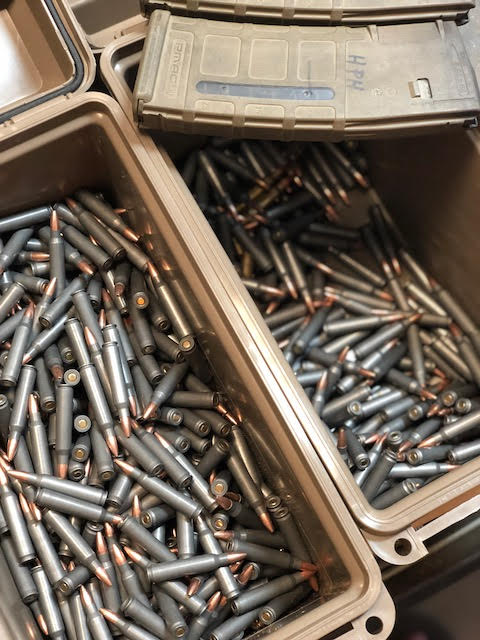
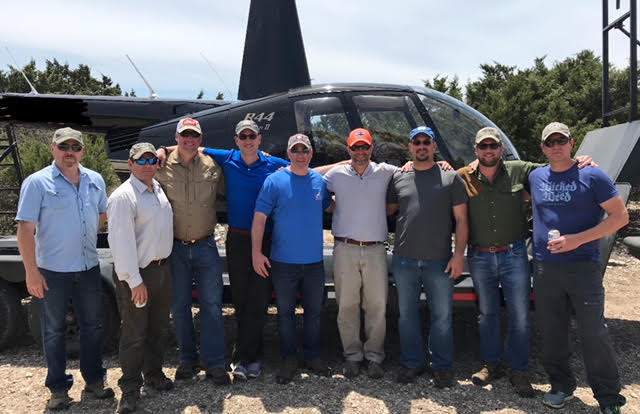
Charter Service Available Citation XLS on part 135…
Contact US Today (214) 707-5833

























































